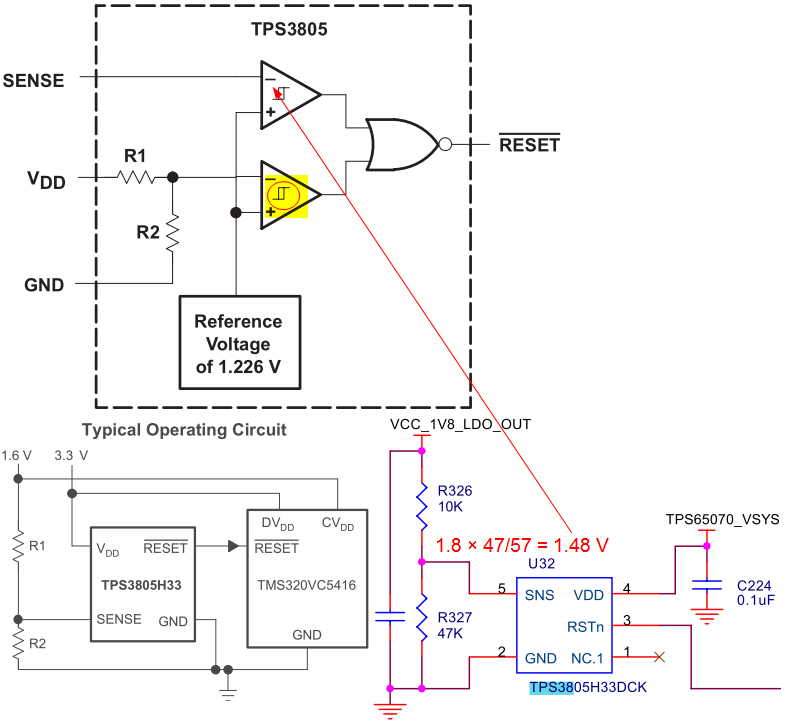Hello,
I have a question on TPS3805.
There is a symbol as enclosed in circle in the image above that I don't understand. What does this wavy symbol(highlighted) represent?

I also have a question on amplifier. The lower right part of the image was the part of the schematic of a TI partner's EVM (EVMAM1808 schematics). When VCC_1V8_LDO_OUT is at 1.8V, the fraction voltage input into SENSE is 1.48V as calculated in the image. This 1.48V is higher than the 1.226V reference voltage, and since 1.226V reference image is connected to "+" end and 1.48V is connected to "-" end, the arithmetic sum is negative.
I have little knowledge with differential amplifier. What is the behavior of a differential amplifier when input arithmetic sum is negative? What would the output be?
Since its output is fed into the OR gate, this output voltage must be non-negative since OR gate is not designed to accept negative voltages. So does the wavy symbol within the differential amplifier mean "absolute value"?
Could anyone help on these questions?
Zheng
